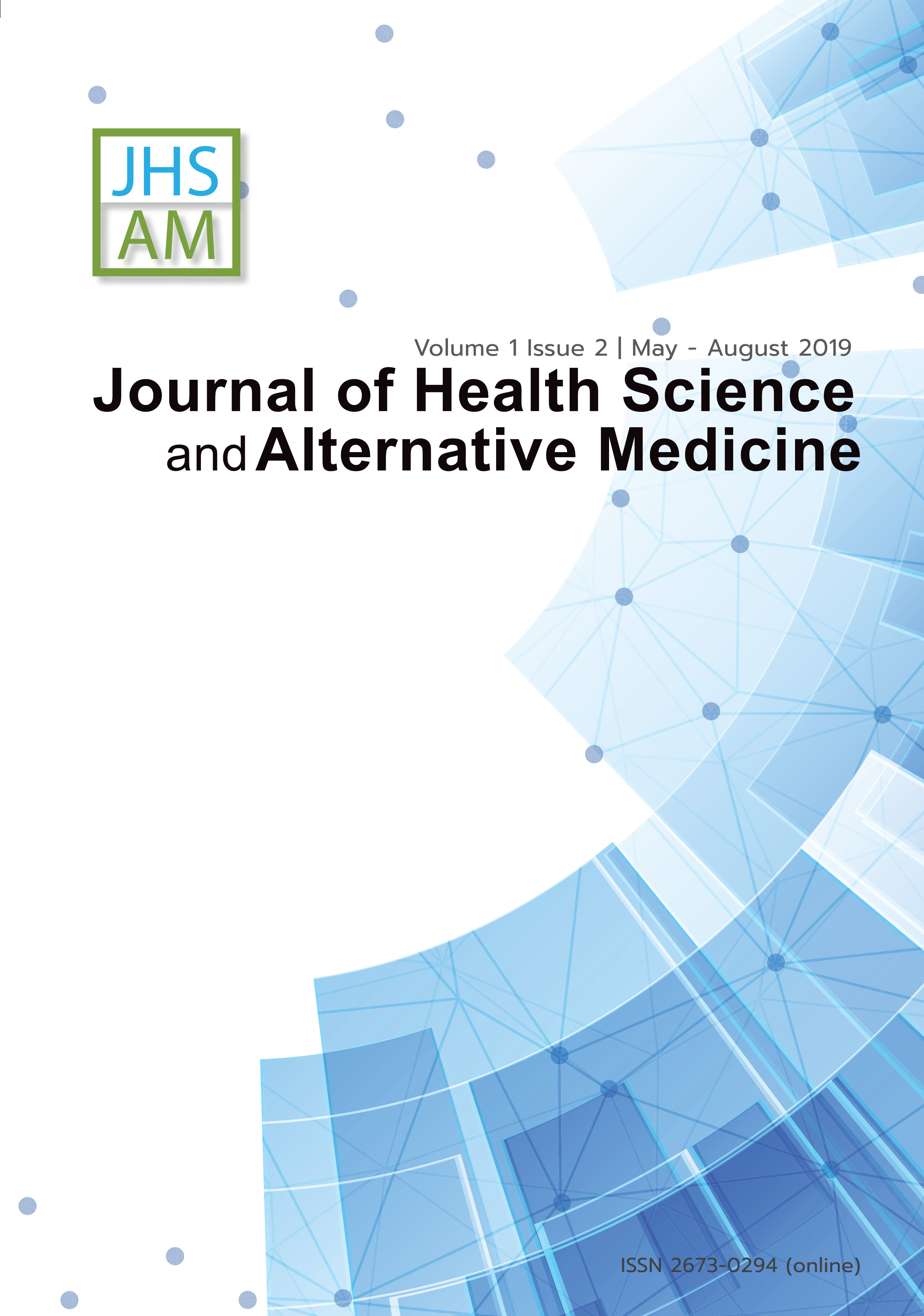Factors Related to Serum Cholinesterase Level and Health Education of Insecticide Usage among Agriculturists in Wiang Kaen District, Chiang Rai Province, Thailand
Main Article Content
Abstract
Introduction: Pesticides have been implicated in toxicity through routes including consumption of residues and inhalation. The previous reports show high amounts of agriculturists who obtained the toxic substance from pesticide throughout Thailand and Chiang Rai that leading to waste of public health funds. Methods: This study was surveying the 146 agriculturists by quota sampling for measuring serum cholinesterase level and assessing pre-test knowledge attitude and practice (KAP) in pesticide usage by using questionnaire as quantitative data. Only 62 people were completed the questionnaire in both pre- and post-test. The data were then analyzed the significant related factors associated with cholinesterase level by chi-square and descriptive statistical analysis. Related factors obtained were then used for preparing knowledge provided to agriculturists. Post-test of KAP and post serum cholinesterase level were later assessed. Qualitative data were also analyzed by dividing agriculturists into 2 groups of improved and non-improved of post-test KAP. The questionnaire for in-depth interview using open-ended question have been used to interview both groups for finding out the difference between two groups. Result: Three factors were found to be related with the enzyme cholinesterase level including family status, manure, and plant disease. KAP score of post-test questionnaire after providing knowledge to agriculturists were significantly higher at the p-values less than 0.05. In qualitative data, chemical storage, period of exposure time and eating behavior were found to be different between KAP improved and non-improved group. Conclusion: The knowledge program for agriculturists which prepared from related factor were efficiently improved KAP among them.
Article Details
JHSAM publishes all articles in full open access, meaning unlimited use and reuse of articles with appropriate credit to the authors.
All our articles are published under a Creative Commons "CC-BY-NC-ND 4.0". License which permits use, distribution and reproduction in any medium,
provided that the original work is properly cited and is used for noncommercial purposes.
References
[2] Kim KH, Kabir E, & Jahan SA. Exposure to pesticides and the associated human health effects. Science of the Total Environment. 2017; 575: 525-535.
[3] Noshad H, Ansarin K, Ardalan MR, et al. Respiratory failure in organophosphate insecticide poisoning. Saudi Medical Journal. 2007; 28(3): 405-407.
[4] Sungur M, & Güven M. Intensive care management of organophosphate insecticide. Critical care. 2001; 5(4): 211-215.
[5] Ather N, Ara J, Khan E, et al. Acute Organophosphate insecticide. Journal of Surgery Pakistan (International). 2008 ;13(2): 71-74.
[6] Tawatsin A, Thavara U, & Siriyasatien P. Pesticides used in Thailand and toxic effects to human health. Medical Research Archives. 2015; 3: 1-10
[7] Sapbamrer R, & Nata S. Health symptoms related to pesticide exposure and agricultural. Environmental Health and Preventive Medicine. 2014; 19: 12-20.
[8] Hofmann JN, Keifer MC, Checkoway H, et al. Biomarkers of Sensitivity and Exposure in Washington State Pesticide Handlers. Advances in Experimental Medicine and Biology. 2009; 660: 19-27.
[9] Hongsibsong S, Kerdnoi T, Polyiem W, et al. Blood cholinesterase activity levels of farmers in winter and hot season of Mae Taeng District, Chiang Mai Province, Thailand. Environmental Science and Pollution Research. 2018; 25(8): 7129-7134.
[10] Rahaman KS, Majdzadeh R, Naieni KH, et al. Knowledge, Attitude and Practices (KAP) Regarding Chronic Complications of Diabetes among Patients with Type 2 Diabetes in Dhaka. International Journal of Endocrinology and Metabolism. 2017; 15(3): 1-13.
[11] Kachaiyaphum P, Howteerakul N, Sujirarat D, et al. Serum Cholinesterase Levels of Thai Chilli-Farm Workers Exposed to Chemical Pesticides: Prevalence Estimates and Associated Factors. Journal of Occupational Health. 2010; 52: 89-98.
[12] Damalas CA, & Eleftherohorinos LG. Pesticide Exposure, Safety Issues, and Risk Assessment Indicators. International Journal of Environmental Research and Public Health. 2011; 8(5): 1402-1419.
[13] Agarwal SB. A Clinical, Biochemical, Neurobehavioral, and Sociopsychological Study of 190 Patients Admitted to Hospital as a Result of Acute Organophosphorus Poisoning. Environmental Research. 1993; 62(1): 63-70.
[14] Del Prado-Lu, JL. Pesticide exposure, risk factors and health problems among cutflower farmers: a cross sectional study. Journal of Occupational Medicine and Toxicology. 2007; 2(9): 8 pp.
[15] Sam KG, Andrade HH, Pradhan L, et al. Effectiveness of an educational program to promote pesticide safety among pesticide handlers of South India. International Archives of Occupational and Environmental Health. 2008; 81(6): 787–795.
[16] Punkhun S, & Norkaew S. Knowledge, attitudes, and practices (KAP) related to blood cholinesterase level among tobacco farmers in Northern Thailand. Human and Ecological Risk Assessment: An International Journal. 2018; 1-12.
[17] Jors E, Lander F, Huici O, et al. Do Bolivian small holder farmers improve and retain knowledge to reduce occupational pesticide poisonings after training on Integrated Pest Management. Environmental Health. 2014;13(75): 1-9.

